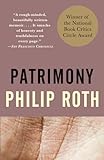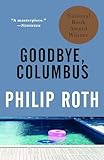
I always forget that, in the popular imagination, the copy editor is a bit of a witch, and it surprises me when someone is afraid of me. Not long ago, a young editorial assistant getting her first tour of The New Yorker offices paused at my door to be introduced, and when she heard I was a copy editor she jumped back, as if I might poke her with a red-hot hyphen or force-feed her a pound of commas. Relax, I wanted to say. I don’t make a habit of correcting people in conversation or in print — unless it’s for publication and they ask for it, or I’m getting paid. We copy editors sometimes get a reputation for wanting to redirect the flow, change the course of the missile, have our way with a piece of prose. The image of the copy editor is of someone who favors a rigid consistency, a mean person who enjoys pointing out other people’s errors, a lowly person who is just starting out on her career in publishing and is eager to make an impression, or, at worst, a bitter, thwarted person who wanted to be a writer and instead got stuck dotting the i’s and crossing the t’s and otherwise advancing the careers of other writers. I suppose I have been all of these.
But good writers have a reason for doing things the way they do them, and if you tinker with their work, taking it upon yourself to neutralize a slightly eccentric usage or zap a comma or sharpen the emphasis of something that the writer was deliberately keeping obscure, you are not helping. In my experience, the really great writers enjoy the editorial process. They weigh queries, and they accept or reject them for good reasons. They are not defensive. The whole point of having things read before publication is to test their effect on a general reader. You want to make sure when you go out there that the tag on the back of your collar isn’t poking up — unless, of course, you are deliberately wearing your clothes inside out.
 When the opening chapters of Philip Roth’s I Married a Communist ran in The New Yorker, I got to OK it. It was immaculate, partly because we were working from the galleys of the book: copy editors at Farrar, Straus and Giroux had already been over it, and, once a piece is in that form, authors, agents, and editors are reluctant to change a ligature. I went over it, giving it all I had: sometimes copy departments at publishing houses miss something, just as we sometimes miss something. As it happens, I noticed a small inconsistency in a passage that was quoted from a children’s history book. It was a long quotation, set off in small type, and it was repeated at the end, with some slight variation. I marked it and gave my proof to the fiction editor, Bill Buford. Later, Bill’s assistant came bounding up the stairs and delivered to me a color Xerox of the first page of my proof, on which Buford had written in blue, “Of Mary Norris, Roth said: ‘Who is this woman? And will she come live with me?’”
When the opening chapters of Philip Roth’s I Married a Communist ran in The New Yorker, I got to OK it. It was immaculate, partly because we were working from the galleys of the book: copy editors at Farrar, Straus and Giroux had already been over it, and, once a piece is in that form, authors, agents, and editors are reluctant to change a ligature. I went over it, giving it all I had: sometimes copy departments at publishing houses miss something, just as we sometimes miss something. As it happens, I noticed a small inconsistency in a passage that was quoted from a children’s history book. It was a long quotation, set off in small type, and it was repeated at the end, with some slight variation. I marked it and gave my proof to the fiction editor, Bill Buford. Later, Bill’s assistant came bounding up the stairs and delivered to me a color Xerox of the first page of my proof, on which Buford had written in blue, “Of Mary Norris, Roth said: ‘Who is this woman? And will she come live with me?’”


 Up to that point, I’d read only Goodbye, Columbus and Portnoy’s Complaint. Helen Stark, who was in charge of The New Yorker’s editorial library, had been all atwitter when The Ghost Writer ran in the magazine — she saved it for herself to index. Now I bought the audiobook of I Married a Communist and listened to it on a drive back from Ohio. It was read by the actor Ron Silver, and I almost went off the road during an ecstatic passage where the stars were furnaces: furnace of Ira, furnace of Eve. It seemed so warm and passionate. The book was funny, too: the hero is forced to schlep his girlfriend’s daughter’s harp all over town, and I had a harpist in the family, so I knew what a pain the harp was — there is nothing heavenly about a working harp. I subsequently had a year of Roth: Patrimony, The Facts (“Reader, I married her”), all the Zuckerman books. When Exit Ghost came out, I went back and read The Ghost Writer. I was on a trip to Amsterdam and saw Anne Frank’s house and reread her diary while staying in a hotel on the spot of one that burned down during the war. I was so sorry when I ran out of Roth to read.
Up to that point, I’d read only Goodbye, Columbus and Portnoy’s Complaint. Helen Stark, who was in charge of The New Yorker’s editorial library, had been all atwitter when The Ghost Writer ran in the magazine — she saved it for herself to index. Now I bought the audiobook of I Married a Communist and listened to it on a drive back from Ohio. It was read by the actor Ron Silver, and I almost went off the road during an ecstatic passage where the stars were furnaces: furnace of Ira, furnace of Eve. It seemed so warm and passionate. The book was funny, too: the hero is forced to schlep his girlfriend’s daughter’s harp all over town, and I had a harpist in the family, so I knew what a pain the harp was — there is nothing heavenly about a working harp. I subsequently had a year of Roth: Patrimony, The Facts (“Reader, I married her”), all the Zuckerman books. When Exit Ghost came out, I went back and read The Ghost Writer. I was on a trip to Amsterdam and saw Anne Frank’s house and reread her diary while staying in a hotel on the spot of one that burned down during the war. I was so sorry when I ran out of Roth to read.
I did speak with Roth on the phone once, closing a piece about Saul Bellow, and saw him at a New Yorker Christmas party. I have been smitten ever since the proposition on the page proof. I suppose all he wanted was a housekeeper, someone to keep track of the details. But if he should ever read this I just want to say I’m still available.
Excerpted from Between You & Me: Confessions of a Comma Queen by Mary Norris. Copyright © 2015 by Mary Norris. With permission of the publisher, W. W. Norton & Company, Inc. All rights reserved.








